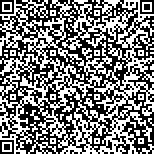| 引用本文: | 谌攀,饶鸿宇,吴灏,王永刚,苏薇薇,李沛波.基于分子对接法和网络药理学揭示小柴胡汤防治新型冠状病毒肺炎的活性成分及作用机制[J].中国现代应用药学,2021,38(21):2665-2674. |
| CHEN Pan,RAO Hongyu,WU Hao,WANG Yonggang,SU Weiwei,LI Peibo.Discovery of the Major Bioactive Compounds and Action Mechanisms Responsible for the Protective Effects of Xiaochaihu Decoction on COVID-19 Based on Molecular Docking and Network Pharmacology Methods[J].Chin J Mod Appl Pharm(中国现代应用药学),2021,38(21):2665-2674. |
|
| |
|
|
| 本文已被:浏览 3389次 下载 1096次 |

码上扫一扫! |
|
|
| 基于分子对接法和网络药理学揭示小柴胡汤防治新型冠状病毒肺炎的活性成分及作用机制 |
|
谌攀, 饶鸿宇, 吴灏, 王永刚, 苏薇薇, 李沛波
|
|
中山大学生命科学学院, 广东省中药上市后质量与药效再评价工程技术研究中心/广东省热带亚热带植物资源重点实验室, 广州 510275
|
|
| 摘要: |
| 目的 探索小柴胡汤防治新型冠状病毒肺炎(COVID-19)的活性成分及作用机制,为小柴胡汤在COVID-19防治中的应用提供参考。方法 通过TCMSP数据库检索小柴胡汤的化学成分,将各化学成分与ACE2、MPro和PLP进行分子对接,预测其在抑制新型病毒感染和复制方面的活性;采用TCMSP和CTD数据库检索小柴胡汤化学成分的靶点,使用String数据库进行蛋白-蛋白相互作用分析得到核心靶点,通过Cytoscape软件构建"药材-活性成分-核心靶点"网络,并进行拓扑分析和对核心靶点进行KEGG通路富集分析,预测小柴胡汤防治COVID-19的作用机制。结果 分子对接结果表明,小柴胡汤的化学成分中与ACE2、MPro和PLP对接结果Libdockscore>120的活性成分个数分别为86,114和105,如甘草苷E与ACE2、MPro和PLP均具有较好的结合活性,柴胡皂苷C的苷元和人参皂苷Rh2与ACE2有较高的结合活性,曲克芦丁和原卟啉与MPro具有高的结合活性,菠菜甾醇和鲨烯与PLP具有高的结合活性。网络拓扑分析筛选得到118个核心靶点,关键靶点涉及PTGS2、AR、MAPK14、PPARG和GSK3B等,与核心靶点相关联的活性成分共124个,如槲皮苷、汉黄芩素、山柰酚、异鼠李素和儿茶酸等。通路富集得到Influenza A、Small cell lung cancer、TNF、Toll-like receptor、PI3K-Akt和HIF-1等关键信号通路。结论 小柴胡汤中的活性成分群发挥防治COVID-19的作用机制主要包括以下3个方面:①活性成分可能通过作用于ACE2、MPro和PLP靶点抑制病毒感染宿主细胞及自我复制的进程;②通过作用于PTGS2、TNF-α和IL-6等靶点抑制细胞因子风暴;③通过调控HIF-1信号通路改善低氧血症。 |
| 关键词: 小柴胡汤 新型冠状病毒肺炎 网络药理学 分子对接 |
| DOI:10.13748/j.cnki.issn1007-7693.2021.21.007 |
| 分类号:R285.5 |
| 基金项目: |
|
| Discovery of the Major Bioactive Compounds and Action Mechanisms Responsible for the Protective Effects of Xiaochaihu Decoction on COVID-19 Based on Molecular Docking and Network Pharmacology Methods |
|
CHEN Pan, RAO Hongyu, WU Hao, WANG Yonggang, SU Weiwei, LI Peibo
|
|
Guangdong Engineering and Technology Research Center for Quality and Efficacy Re-evaluation of Post-marketed TCM, Guangdong Key Laboratory of Plant Resources, School of Life Sciences, Sun Yat-sen University, Guangzhou 510275, China
|
| Abstract: |
| OBJECTIVE To explore the active constituents and mechanism of action in Xiaochaihu decoction(XCHD) for treatment of COVID-19, and provide a reference for its clinical application. METHODS The chemical constituents in XCHD were collected by using Traditional Chinese Medicine Systems Pharmacology Database(TCMSP). Further molecular docking study was performed to evaluate the interactions between these constituents and the ACE2, MPro, and PLP target proteins. The targets of constituents were collected by using TCMSP and Comparative Toxicogenomics Database(CTD). Protein-protein interaction(PPI) data was constructed by using String website to screen key targets. The "herb-active constituent-key target" network was constructed by using Cytoscape software, followed by topology analysis. Moreover, KEGG pathway analysis was performed on screened key targets with the DAVID database to predict the protective mechanism of XCHD on COVID-19. RESULTS Molecular docking results showed that the number of active ingredients in XCHD binding with ACE2, MPro, and PLP with Libdockscore>120 were 86, 114, and 105, respectively. For example, licorice glycoside E was nicely bound to ACE2, MPro and PLP. Saikosaponin C and ginsenoside Rh2 were nicely bound to ACE2. Troxerutin and protoporphyrin were nicely bound to Mpro. α-Spinasterol and supraene were nicely bound to PLP. Network topology analysis screened 118 core targets, the key targets involved PTGS2, AR, MAPK14, PPARG and GSK3B, etc. A total of 118 key targets were screened, such as PTGS2, AR, MAPK14, PPARG, and GSK3B. There were 124 key target-related active components, such as quercetin, wogonin, kaempferol, isorhamnetin, and (-)-catechin. Further KEGG pathway analysis revealed several key pathways which were probably involved in the treatment of COVID-19, including Influenza A pathway, Small cell lung cancer pathway, TNF signaling pathway, Toll-like receptor signaling pathway, PI3K-Akt signaling pathway, and HIF-1 signaling pathway. CONCLUSION The mechanisms of XCHD in the treatment of COVID-19 are summarized as following:① the active constituents can act on ACE2, MPro and PLP to inhibit the infection and reproduction of SARS-CoV-2. ② act on the targets such as PTGS2, TNF-α, and IL-6 to inhibit the cytokine release syndrome. ③ regulate the HIF-1 signaling pathway to alleviate hypoxemia. |
| Key words: Xiaochaihu decoction COVID-19 network pharmacology molecular docking |
|
|
|
|
